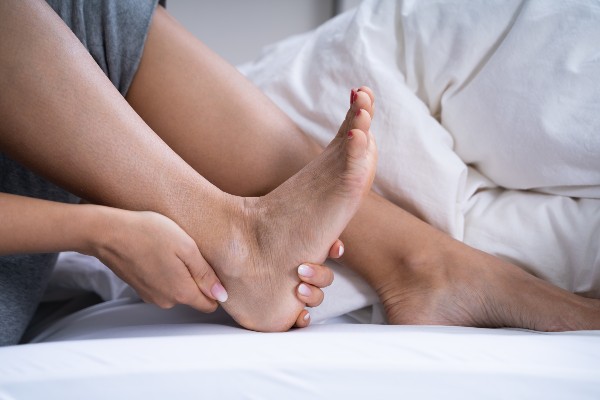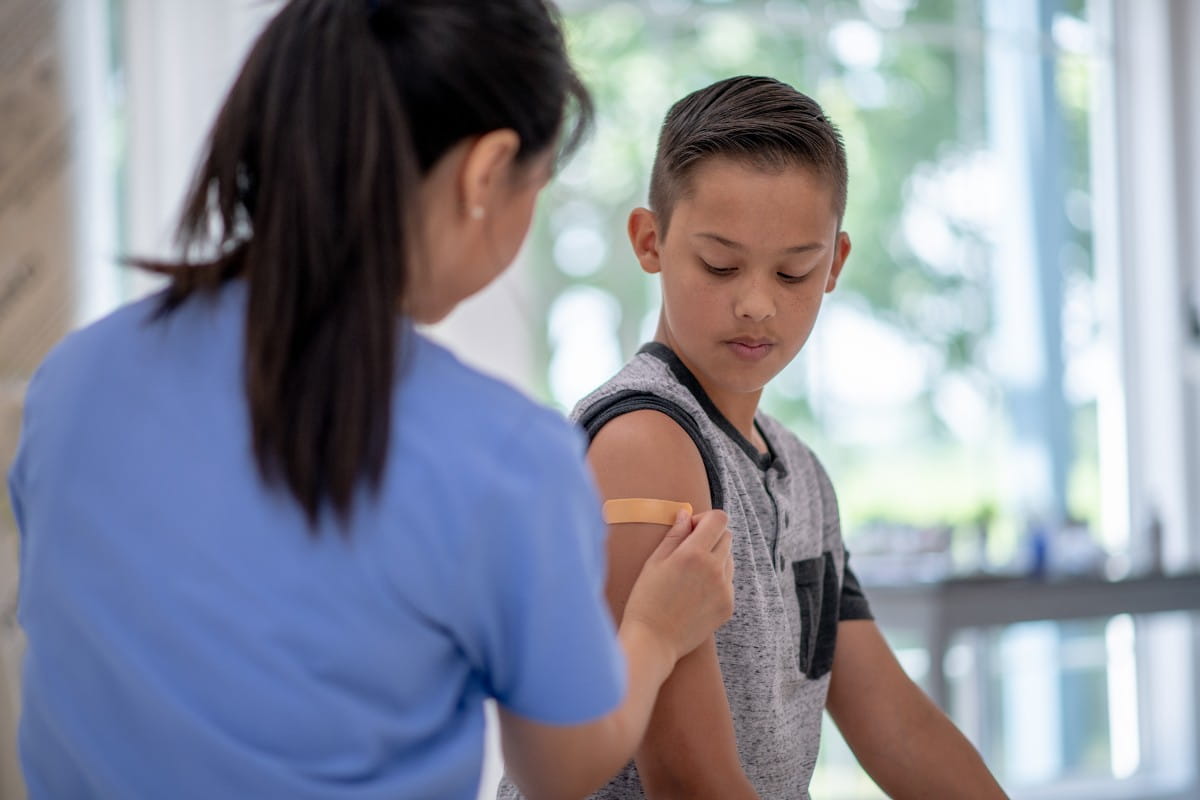How to ease pain, speed healing and prevent reinjury
Achilles tendinitis is one of the most common overuse injuries, especially among active adults, runners, and those who play high-impact sports like tennis or basketball. If you’ve felt a nagging ache or sharp pain at the back of your heel or lower leg, your Achilles tendon—the largest tendon in your body—might be inflamed or damaged.
“When you overuse your Achilles tendon or suddenly increase the intensity of your exercise workouts, the tendon becomes irritated and inflamed. This is tendinitis, a common overuse injury,” says Jeffrey Levy, D.O., a fellowship-trained foot and ankle orthopedic surgeon with Riverside Orthopedic & Sports Medicine Specialists.
“In some people, the tendon actually degenerates and develops microscopic tears—a related condition called Achilles tendinosis.”
Whether you’re dealing with Achilles tendon pain, stiffness, or swelling, early treatment is the key to preventing further damage and speeding up recovery.
What Is Achilles Tendinitis?
Achilles tendinitis occurs when the tendon connecting your calf muscles to your heel becomes inflamed, often from repetitive stress. It’s especially common in people who:
- Suddenly increase the intensity or duration of physical activity
- Wear unsupportive or worn-out shoes
- Have flat feet or high arches
- Run on hard, sloped or uneven surfaces
- Perform repetitive leg motions at work or during sports
Symptoms of Achilles Tendinitis
You may notice symptoms gradually, especially after workouts or periods of rest. Pain often feels worse in the morning and improves slightly with movement—only to return with more activity.
Common signs include:
- Dull or sharp pain at the back of the heel or lower leg
- Swelling and tenderness around the tendon
- A burning or aching sensation with activity
- Stiffness after sitting or sleeping
- Thickening of the tendon or small lumps (with tendinosis)
- Difficulty walking or pushing off the foot
If your symptoms worsen or don’t improve with rest, it’s time to consult a foot and ankle orthopedic surgeon for a proper diagnosis.
How Achilles Tendinitis Is Diagnosed
A specialist will evaluate your pain pattern, activity level and foot mechanics. To assess the extent of tendon damage, your provider may order imaging such as:
- X-rays (to rule out bone spurs or other issues)
- MRI (to visualize microtears, inflammation or degeneration)
Nonsurgical Treatment for Achilles Tendinitis
Most people recover well with conservative care. Dr. Levy recommends a combination of rest, targeted stretching, and supportive devices.
Nonsurgical treatments may include:
- Rest and activity modification
- Ice therapy to reduce inflammation
- NSAIDs like ibuprofen for pain relief
- Heel lifts or shoe inserts to reduce tendon strain
- Contrast baths (alternating warm and cold water)
- Immobilization with a brace or boot in severe cases
- Stretching and strengthening exercises for the calf and foot
“Be aware it may take several months for your symptoms to go away completely,” says Dr. Levy. “And the sooner you seek treatment, the more successful your recovery is likely to be.”
What If Symptoms Don’t Improve?
If pain and stiffness persist after a few months, your orthopedic specialist may suggest additional therapies:
- Physical therapy to restore flexibility and strength
- Custom orthotics to correct foot mechanics
- Night splints to gently stretch the tendon during sleep
- Shockwave therapy to stimulate healing
- Platelet-rich plasma (PRP) injections to support tendon repair
When Is Surgery Necessary?
Surgery is usually considered after 3–6 months of failed nonsurgical treatment.
“During surgery for Achilles tendinitis, we typically cut out the degenerative or diseased tendon. We also repair any tears within the tendon,” explains Dr. Levy. “To help prevent further scarring of the tendon, we’ll probably ask you to move your leg almost immediately after surgery.”
If you’ve developed Achilles tendinosis, a tendon transfer may be necessary to reinforce the damaged area and improve blood flow.
Minimally Invasive Achilles Surgery
In select cases, patients may benefit from minimally invasive surgical techniques to repair Achilles tendinitis—an option that often leads to faster recovery, reduced scarring, and less postoperative pain compared to traditional open surgery.
Dr. Levy, is fellowship-trained in advanced foot and ankle procedures, such as minimally invasive approaches to treat chronic Achilles tendon issues. During this procedure, Dr. Levy uses small incisions and specialized instruments to remove damaged tissue, stimulate healing and repair tears with precision—preserving more of the healthy tendon and minimizing trauma to surrounding tissue.
These techniques are particularly helpful for athletes or active individuals hoping to return to sports and movement more quickly and comfortably.
“When clinically appropriate, minimally invasive surgery allows us to treat tendon degeneration with less disruption to the surrounding tissue,” says Dr. Levy. “It’s an excellent option for many patients with persistent Achilles tendinitis who haven’t responded to conservative care.”
What to Expect from Recovery
Post-surgery recovery may take 3–6 months. Your plan may include:
- Physical therapy
- Gradual return to physical activity
- Protective footwear or braces
- Home exercises to regain strength and flexibility
Recovery times vary based on your age, injury severity, and treatment type—but most patients return to full activity with proper care.
How to Prevent Achilles Tendon Injuries
Once you’ve healed, take steps to prevent future flare-ups. Dr. Levy recommends daily stretching and good footwear.
Prevention tips:
- Warm up before physical activity
- Stretch your calves and Achilles tendons daily
- Wear supportive, cushioned shoes
- Avoid sudden increases in workout intensity
- Alternate high-impact and low-impact activities
Get Expert Care for Achilles Tendon Pain
If you’re dealing with heel pain, stiffness, or swelling, don’t wait to get help. At Riverside Orthopedic & Sports Medicine Specialists, our expert team offers the latest non-surgical and surgical treatments for Achilles tendinitis and tendinosis.
Call 757-534-9988 to schedule an appointment with Dr. Jeffrey Levy, or request a consultation online today.



